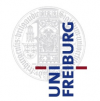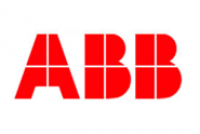Partners
 Norwegian University of Science and Technology (NTNU), Department of Engineering Cybernetics, Trondheim, Norway. Norwegian University of Science and Technology (NTNU), Department of Engineering Cybernetics, Trondheim, Norway. The Norwegian University of Science and Technology is the primary Norwegian university in engineering and technology with 19,000 students. Its sister organization, the co-located applied research consultancy SINTEF, employs 2,100 staff. The Department of Engineering Cybernetics has 15 professors, 10 post.docs and 60 PhD candidates. They undertakes research and education in control engineering and embedded systems, where about 70-80 master students graduate each year. |
|---|
| Professors Tor A. Johansen (coordinator) and Morten Hovd, NTNU |
 Katholieke Universiteit Leuven (KUL), Optimization in Engineering Center (OPTEC), Leuven, Belgium. Katholieke Universiteit Leuven (KUL), Optimization in Engineering Center (OPTEC), Leuven, Belgium. K.U. Leuven is the 6th European university in the 2008 Leiden ranking and has had a rich tradition of learning and research for almost six centuries. The Department of Mechanical engineering is associated with the Optimization in Engineering Center (OPTEC), which is comprised of 20 professors, ten postdocs, and 50 PhD students from 5 departments (Mechanical, Electrical, Chemical, Civil Engineering and Computer Science). They bridge the gap between mathematical optimization and engineering applications. |
| Professor Jan Swevers , KU Leuven |
 Ecole polytechnique fédérale de Lausanne (EPFL), Automatic Control Laboratory, Lausanne, Switzerland. Ecole polytechnique fédérale de Lausanne (EPFL), Automatic Control Laboratory, Lausanne, Switzerland. The EPFL was ranked second among European schools for Engineering and Technology in the Jiao Tong 2011 rankings and maintains a strong presence both within Europe and globally. The researchers from the EPFL participating in TEMPO will work within the Laboratoire d’Automatique (LA) in the School of Engineering (STI). The laboratory is composed of three professors with a broad theoretical and industrial background in control and optimization techniques. |
| Ass. Professor Colin Jones, EPFL |
 Slovak University of Technology in Bratislava, Slovakia. Slovak University of Technology in Bratislava, Slovakia. STUBA is the leading Slovak university in technology disciplines. STUBA will be represented by several institutes: Institute of Automation, Measurement and Applied Informatics, Institute of Information Engineering, Automation and Mathematics, and in cooperation with the Institute of Control and Industrial Informatics. These cover research in control engineering with applications in mechanical, chemical, and electrical engineering. |
| Professors Miroslav Fikar and Boris Rohal-Ilkiv, Dr. Michal Kvasnica, STUBA |
 Ecole Supérieure d’Electricité (CentraleSupélec), Automatic Control Department, E3S (Supélec Systems Sciences), Paris, France. Ecole Supérieure d’Electricité (CentraleSupélec), Automatic Control Department, E3S (Supélec Systems Sciences), Paris, France. CentraleSupélec is one of France’s prestigious Grandes Ecoles (ranked A+ in the national rankings) and one of the top in its field of electrical and computer engineering at the international level. Partnerships with the industry have always been a priority. In 1986, CentraleSupélec founded the Teaching and Research Partnership in Cooperation with Business (PERCI&S), a network of privileged companies, in order to widen the openings to graduates and to develop research involving students. In 2011, PERCI include 36 companies. Since its creation in 1894, to meet the needs of the new industries that were emerging from electricity, CentraleSupélec has become a real enterprise employing 1,500 people (on three campuses) who adapt permanently to technological and economic advances in order to produce high quality research, training and education. |
| Assoc. Professors Sorin Olaru and Pedro Rodriguez-Ayerbe, CentraleSupélec |
 Imperial College of Science, Technology and Medicine, Departments of Electrical & Electronic Engineering, and Aeronautics, London, UK.\\Imperial has a global reputation for excellence in training, research and scholarship in science, technology and medicine. The College was rated 1st in Europe and 12th in the world for research in the 2011/12 Times Higher Education World University Rankings. Three research groups are involved in TEMPO. The Control and Power Group and the Circuits and Systems Group in the Department of Electrical and Electronic Engineering. The Department of Aeronautics includes experts in the field of flight vehicle design, real-time optimization and control theory. Imperial College of Science, Technology and Medicine, Departments of Electrical & Electronic Engineering, and Aeronautics, London, UK.\\Imperial has a global reputation for excellence in training, research and scholarship in science, technology and medicine. The College was rated 1st in Europe and 12th in the world for research in the 2011/12 Times Higher Education World University Rankings. Three research groups are involved in TEMPO. The Control and Power Group and the Circuits and Systems Group in the Department of Electrical and Electronic Engineering. The Department of Aeronautics includes experts in the field of flight vehicle design, real-time optimization and control theory. |
| Drs. Eric Kerrigan and George Constantinides, Imperial College |
 Ampyx Power B.V., Den Haag, The Netherlands. Ampyx Power B.V., Den Haag, The Netherlands.Ampyx Power is a start-up company (SME) that is developing a new method of generating wind energy, called the PowerPlane. Currently, eight people work in Ampyx Power. A 5.5m span demonstrator PowerPlane and a 10kW winch have been build and are operational for concept demonstration purposes. Focus is given to the automation of the power generation. In the near future the company objectives will extend to optimally launching and landing this system and flight path optimization for the power production phase. Longer term objectives are optimization of wind parks for lowest price per unit power output. |
| Sören Sieberling, Ampyx Power |
 Renault, R & D Department, Control Systems, Paris, France.\\Nowadays present in 118 countries, the Renault-Nissan group is considered the 4th international manufacturer. The PhD fellows in TEMPO will not only become Predictive-Control specialists, they will also become aware of industrial constraints such as cost and safety. This is essential when building a network of control experts that will bring the benefits of Predictive Control and Optimization to the customers. Renaults Control System Department has published 35 new patents in 2011. Renault, R & D Department, Control Systems, Paris, France.\\Nowadays present in 118 countries, the Renault-Nissan group is considered the 4th international manufacturer. The PhD fellows in TEMPO will not only become Predictive-Control specialists, they will also become aware of industrial constraints such as cost and safety. This is essential when building a network of control experts that will bring the benefits of Predictive Control and Optimization to the customers. Renaults Control System Department has published 35 new patents in 2011. |
| Dr. Olivier Aubert and Dr. Renaud Deborne, Renault |
 Albert-Ludwigs-Universität in Freiburg, Germany. Albert-Ludwigs-Universität in Freiburg, Germany.Founded in 1457, the University of Freiburg is one of the oldest German universities and is now one of the nation’s leading research and teaching institutions. More than 24,000 students from over 100 nations are matriculated in 180 degree programs at 11 faculties. The faculty of engineering was founded in 1995 and is the youngest and fastest growing faculty of the University of Freiburg, with now 43 professors, 450 research staff, and 1600 students. It offers bachelor and master programmes in computer science, microsystems and embedded systems engineering. |
| Professor Moritz Diehl, University of Freiburg |
 University of Oxford, , Department of Engineering Science, Oxford, UK. The University of Oxford is the oldest university in the English-speaking world, with a history dating to 1096, and is consistently rated amongst the world’s top research universities. The Control Group within the Department of Engineering Science is comprised of five professors and has a long track record in the analysis, design and implementation of control systems for a wide variety of engineering applications. University of Oxford, , Department of Engineering Science, Oxford, UK. The University of Oxford is the oldest university in the English-speaking world, with a history dating to 1096, and is consistently rated amongst the world’s top research universities. The Control Group within the Department of Engineering Science is comprised of five professors and has a long track record in the analysis, design and implementation of control systems for a wide variety of engineering applications. |
| Professor Paul Goulart, University of Oxford |
Associated Partners
 ABB, Corporate Research and Development, Department of Information Technologies, Switzerland. ABB, Corporate Research and Development, Department of Information Technologies, Switzerland.ABB is a major equipment manufacturer specialising in automation and electrical networks. ABB Corporate Research and Development is the project partner, and will involve other ABB experts as necessary. They offer a full range of products for power systems including sensors, remote I/Os, communication equipment, gateways, transmission and distribution information management systems and transmission and distribution protection and control equipment. ABB Corporate Research and Development has a broad, combined expertise on power products, power systems and related device, sensor and IT technologies. On the power systems level they are involved in research for modeling, simulation, control and protection or power systems, their automation systems, modeling, simulation and prediction of power markets. | |
|---|---|
| Dr. Joachim Ferreau, ABB | |
 National Instruments UK & Ireland, UK. National Instruments UK & Ireland, UK.National Instruments transforms the way engineers and scientists around the world design, prototype, and deploy systems for test, control, and embedded design applications. From testing next-generation gaming systems to creating breakthrough medical devices, NI customers continuously develop innovative technologies that impact millions of people. National Instruments is providing tools that inspire and empower engineers and scientists to improve the world, working to reduce its environmental footprint, and improving communities around the world. Using NI open graphical programming software and modular hardware, customers at more than 30,000 companies annually simplify development, increase productivity, and dramatically reduce time to market. | |
| David Baker, NI | |
 Stanford University, Department of Electrical Engineering, Stanford, California, USA. Stanford University, Department of Electrical Engineering, Stanford, California, USA.Stanford is recognized as one of the world’s leading universities. Its current community of scholars include 17 Nobel laureates. Stanford is noted for multidisciplinary research and innovation within its schools and departments, as well as its independent laboratories, centers and institutes. | |
| Professor Stephen P. Boyd , Stanford University | |
 Eidgenössische Technische Hochschule Zürich (ETHZ), Automatic Control Laboratory, Zürich, Switzerland. Eidgenössische Technische Hochschule Zürich (ETHZ), Automatic Control Laboratory, Zürich, Switzerland. The Swiss Federal Institute of Technology, ETH Zurich, is the top-ranked university in mainland Europe according to the Shanghai Jiaotong Academic Ranking of World Universities 2010. The team members for ETH will be based in the Automatic Control Laboratory (IfA) of the Department of Electrical and Engineering. Their theoretical work is focused on the modeling, simulation and analysis of hybrid systems. Among the application areas are aircraft management, biological systems, power electronics, mechatronics and vehicle assistance systems. | |
| Professor Manfred Morari and Dr. Paul Goulart, ETH | |
 Karlsruhe Institute of Technology (KIT), Institute for Automation and Applied Informatics, Karlsruhe, Germany. Karlsruhe Institute of Technology (KIT), Institute for Automation and Applied Informatics, Karlsruhe, Germany. The Institute for Automation and Applied Informatics (IAI) is a research institute of Karlsruhe Institute of Technology (KIT) that is member of the Helmholtz Association (HGF). IAI conducts research and development in the area of innovative, application-oriented information, automation, and systems technologies for futureproof energy systems and complex industrial and laboratory processes. Interdisciplinary working groups conceive integrated systems solutions, with all development phases being covered from conceptual design to modeling and simulation, to prototyping, to practical testing, also under industrial conditions. Our work also gives rise to novel, reusable methods and tools for system building. | |
| Professor Dr. Veit Hagenmeyer and Dr. Timm Faulwasser, KIT | |

